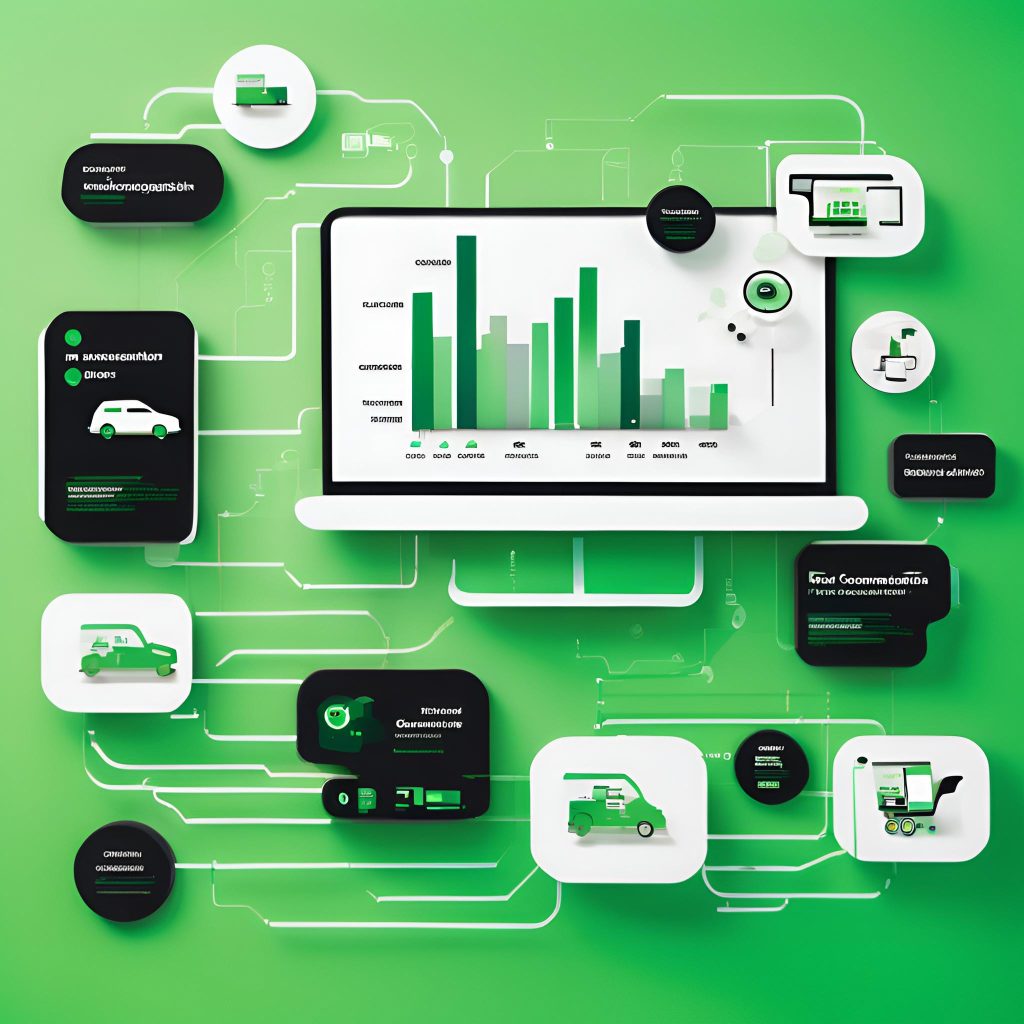Understanding your customers isn’t just a nice-to-have – it’s a necessity inside the world of e-commerce.
Customer segmentation, the practice of dividing your customer base into distinct groups with similar characteristics, has emerged as a powerful tool for e-commerce businesses looking to boost their bottom line.
But how exactly does this data-driven approach translate into dollars?
Let’s dive in and explore the transformative power of customer segmentation in e-commerce success.
The Fundamentals of Customer Segmentation
At its core, customer segmentation is about recognizing that not all customers are created equally.
Each customer has unique preferences, behaviors, and needs.
By grouping customers with similar traits, businesses can tailor their marketing efforts, product offerings, and customer service approaches to better meet the specific needs of each segment.
Common types of customer segmentation include:
- Demographic Segmentation: Based on age, gender, income, education, etc.
- Geographic Segmentation: Focused on location-based factors.
- Psychographic Segmentation: Centered on personal interests, lifestyle, values, and personality traits.
- Behavioral Segmentation: Based on purchasing habits, brand interactions, and product usage.
While these categories provide a starting point, the real power of segmentation in e-commerce comes from combining these factors to create highly specific, actionable customer profiles.
The Data Advantage in E-Commerce
E-commerce businesses have a unique advantage when it comes to customer segmentation: access to vast amounts of data.
Every click, purchase, abandoned cart, and customer service interaction provides valuable insights into customer behavior and preferences.
This wealth of data allows e-commerce businesses to go beyond basic segmentation and create highly nuanced customer profiles.
For instance, instead of simply segmenting customers by age, an e-commerce business might identify a segment of “tech-savvy millennials who prefer eco-friendly products and make purchases primarily through mobile devices during their evening commute.”
Such specific segmentation allows for hyper-targeted marketing efforts and personalized customer experiences – key drivers of e-commerce success.
Turning Segments into Strategies
Once you’ve identified your key customer segments, the next step is to develop targeted strategies for each group.
Here’s how this might play out across different areas of your e-commerce business:
Product Development and Inventory Management
Understanding the preferences of different customer segments can inform product development and inventory decisions.
For example, if you identify a growing segment of health-conscious customers, you might expand your range of organic or natural products.
Moreover, segmentation can help with inventory forecasting.
If you know that a particular segment tends to make larger purchases during specific times of the year, you can adjust your inventory accordingly, reducing the risk of stockouts or overstocking.
Pricing and Promotions
Different customer segments may have varying price sensitivities.
Luxury-oriented segments might be less price-sensitive and more interested in exclusive or limited-edition items.
Budget-conscious segments, on the other hand, might be more responsive to discounts and promotions.
By tailoring your pricing and promotional strategies to each segment, you can maximize revenue and profitability.
For instance, you might offer premium, personalized services to your high-value segments while providing budget-friendly options with value-added features to price-sensitive segments.
Marketing and Communication
Customer segmentation allows for highly targeted marketing campaigns.
Instead of sending the same email blast to your entire customer base, you can craft personalized messages that resonate with each segment’s specific interests and needs.
For example, for a segment of busy professionals who value convenience, you might highlight your fast shipping options and easy return policy.
For a segment of eco-conscious consumers, you could focus on your sustainable practices and eco-friendly product lines.
User Experience and Website Design
Different customer segments may navigate your e-commerce site in different ways.
By analyzing the behavior of each segment, you can optimize your website design to cater to their preferences.
For instance, if you have a segment of customers who frequently use your site’s search function, you might invest in improving your search capabilities and prominently featuring the search bar.
For segments that respond well to visual content, you might focus on high-quality product images and videos.
Customer Service
Customer segmentation can also inform your customer service strategies.
Some segments might prefer self-service options, while others might value personalized, human interaction.
By understanding these preferences, you can provide the right level of support to each segment, improving customer satisfaction while potentially reducing support costs.
The ROI of Segmentation: From Data to Dollars
So, how does all this translate into tangible financial benefits?
Let’s look at some real-world examples and statistics:
Increased Conversion Rates
A study by Mailchimp found that segmented email campaigns had a 14.31% higher open rate and a 100.95% higher click-through rate compared to non-segmented campaigns.
For e-commerce businesses, higher click-through rates often translate directly into increased sales.
Higher Average Order Value
By tailoring product recommendations and promotions to specific segments, businesses can encourage customers to make larger purchases.
Amazon, a master of customer segmentation, attributes 35% of its revenue to its personalized product recommendations.
Improved Customer Retention
Segmentation allows for more personalized customer experiences, which can significantly boost customer loyalty.
According to a study by Accenture, 91% of consumers are more likely to shop with brands that provide relevant offers and recommendations.
Reduced Marketing Costs
By targeting your marketing efforts to specific segments rather than using a one-size-fits-all approach, you can often achieve better results with lower overall marketing spend.
A case study by IBM found that behavioral segmentation allowed a retailer to achieve a 400% increase in response rates to email campaigns.
Enhanced Lifetime Customer Value
By understanding the long-term potential of different customer segments, businesses can focus their efforts on nurturing high-value customers.
A study by Bain & Company found that increasing customer retention rates by 5% increases profits by 25% to 95%.

Implementing Effective Customer Segmentation
While the benefits of customer segmentation are clear, implementing an effective segmentation strategy requires careful planning and execution.
Here are some key steps to consider:
Data Collection and Analysis
Start by ensuring you’re collecting relevant data across all customer touchpoints.
This might include purchase history, browsing behavior, customer service interactions, and demographic information.
Invest in robust analytics tools to help you make sense of this data and identify meaningful patterns.
Segment Identification
Based on your data analysis, identify distinct customer segments.
Remember, the goal is to create segments that are meaningful and actionable for your business.
Don’t fall into the trap of creating too many segments – aim for a manageable number that covers the majority of your customer base.
Develop Segment Profiles
Create detailed profiles for each segment, including their key characteristics, behaviors, preferences, and pain points.
These profiles will guide your strategic decisions for each segment.
Strategy Development
For each segment, develop targeted strategies across all areas of your business – from marketing and product development to customer service and user experience.
Implementation and Testing
Roll out your segmented strategies, but don’t stop there. Continuously test and refine your approach.
A/B testing can be particularly valuable in determining which strategies resonate best with each segment.
Regular Review and Update
Customer preferences and behaviors change over time.
Regularly review and update your segments to ensure they remain relevant and effective.
Challenges and Considerations
While customer segmentation can be incredibly powerful, it’s not without its challenges.
Here are a few key considerations:
Data Privacy
With increasing concerns about data privacy and regulations like GDPR, it’s crucial to ensure your data collection and usage practices are ethical and compliant with relevant laws.
Avoiding Over-Segmentation
While detailed segmentation can be beneficial, there’s a point of diminishing returns.
Over-segmentation can lead to increased complexity without proportional benefits.
Maintaining Flexibility
While segmentation is valuable, it’s important not to become too rigid in your approach.
Always be open to individual customers defying their segment’s typical behavior.
Technology Investment
Effective segmentation often requires investment in data analytics tools and marketing automation platforms.
Ensure you’re prepared for these costs and have the technical expertise to leverage these tools effectively.
Customer Segmentation in E-Commerce In The Years Beyond
As we look to the future, the role of customer segmentation in e-commerce is only set to grow.
Advancements in artificial intelligence and machine learning are making it possible to create even more nuanced, dynamic customer segments.
We’re moving towards a world of “segments of one,” where businesses can provide truly personalized experiences for each individual customer.
This might sound like science fiction, but companies like Netflix and Spotify are already using AI to create unique content recommendations for each user.
For e-commerce businesses, this could mean dynamically adjusting product recommendations, pricing, and even website layouts in real-time based on individual customer behavior.
The Power of Understanding Your Customers
In the competitive world of e-commerce, understanding your customers isn’t just about providing better service – it’s about survival and growth.
Customer segmentation provides the framework for this understanding, allowing businesses to transform raw data into actionable insights and, ultimately, into dollars.
By leveraging the power of customer segmentation, e-commerce businesses can create more targeted marketing campaigns, develop products that better meet customer needs, provide more personalized customer experiences, and ultimately, drive significant improvements in key metrics like conversion rates, average order value, and customer lifetime value.
Effective segmentation is not a one-time effort, but an ongoing process of learning and refinement.
As you continue to gather data and gain insights about your customers, your segmentation strategy should evolve, allowing you to stay ahead of changing customer needs and preferences.
In the end, the businesses that will thrive in the e-commerce landscape of the future will be those that can most effectively turn customer data into customer understanding, and customer understanding into tailored, value-adding experiences.
That’s the true power of customer segmentation – turning data into dollars by putting the customer at the heart of everything you do.
Don’t let valuable customer insights slip through your fingers.
It’s time to turn your data into dollars and propel your e-commerce business to new heights.
At Profit Solutions, we specialize in helping businesses like yours implement effective customer segmentation strategies.
Our team of experts can guide you through the process, from data collection and analysis to strategy development and implementation.
Contact us for a free strategy meeting and discover how customer segmentation can boost your bottom line.
Your e-commerce success story begins here!






